By Marcia Myers
Blog Editor, Wild Ones – St. Louis Chapter
“OMG, Why didn’t you tell us?” was the reaction by Marsha Gebhardt, President, Wild Ones – St. Louis Chapter and Fran Glass, Secretary who expressed their delight after seeing Dawn Weber’s meticulously-landscaped, native-plant-filled yard, which was showcased during our May 4 and May 14 gatherings.
Marsha and Fran were not the only ones who could be heard saying, “ooh” and “aah” as they sauntered around and among 300 species of native plants. Recently, Dawn purchased an additional 65 native plants at the Spring Shaw Wildflower Market to add to her 1/4 acre. Yes, she admits she is a collector.
Dawn’s plants follow the usual landscaping rules of variety, and she has plants for sun, for shade, that climb, and that grow in a rain garden. These plants have various sizes, colors, and blooming times. The beds are defined with space-creating leaf mulch. But Dawn’s garden is distinctive for other reasons.
The combination of using native plants in a manicured garden with her other thoughtful touches are what elevates her garden to delightful and inspiring.
- Stepping stones dot the garden and allow access to back areas of additional discoveries.
- Recycled lawn ornaments use materials like silverware, golf clubs, and hinges, which add a whimsical and magical feeling.
- An old Christmas tree, a decaying wood bench, and a rotting hollow trunk, all add habitat for wildlife.
- Wood stools cut from an old sycamore that had to be removed provide a resting or meditation place to sit.
- A water fountain adds the necessary moisture. Dawn says birds don’t like really deep water. She puts partially submerged rocks in the fountain so they can stand and drink. Rocks in the center prevent starlings from splashing out all of the water at one time.
From a practical standpoint, the metal plant signs help Dawn identify and learn about that plant as it grows, blooms, and dies. As a Bring Conservation Home consultant she wants to feel confident in her recommendations. She uses flags to mark new plants so she doesn’t forget to water her additions the first year until they get established.
Dawn said she didn’t realize her yard wasn’t normal.
So how did this “not normal” native-plant landscaped creation come about?
In December of 2012, Dawn went looking for information about how to attract local birds because she wanted to see additional species at her feeders.
Dawn attended the Partners for Native Landscaping Workshop which was in its second year. Her immediate thought was, “Yeah, I have to do more of this. I actually applied for my Bring Conservation Home (BCH) consultation during the workshop, not waiting until I got home.”
Dawn said that during the consultation the trained technicians were very helpful and told her she had some things on the bad plant list. Then they gave some suggestions. “All I had were invasive plants and a couple of bad bushes and an unidentified tree in the front yard that is now gone.” In addition, she had some large bush honeysuckle in the back yard most of which she removed later, including some that had to be removed with the help of an SUV, referred to as the “weed puller”. The bush honeysuckle (Diervilla lonicera) removal is an ongoing project, along with removal of English ivy (Hedera helix), and wintercreeper (Euonymus fortunei).
After the BCH consultation, Dawn applied for the Landscape Challenge with Wild Ones – St. Louis Chapter. Although her survey wasn’t done in time, the Challenge was extended that year. Jeanne Cablish and Ed Schmidt came to the house and interviewed Dawn. She was chosen to be the lucky winner.
Prior to the Landscape Challenge planting event, Dawn, with lots of help, pulled out yew bushes, killed the grass, dug up the tree, and installed the pipe for the rain garden. With the exception of a few more-recent plants, everything in the front yard was planted by more than 30 Wild Ones – St. Louis Chapter volunteers.
What are the 300 plant species in Dawn’s yard? What wildlife visits this habitat? To find out, stay tuned for Part II.

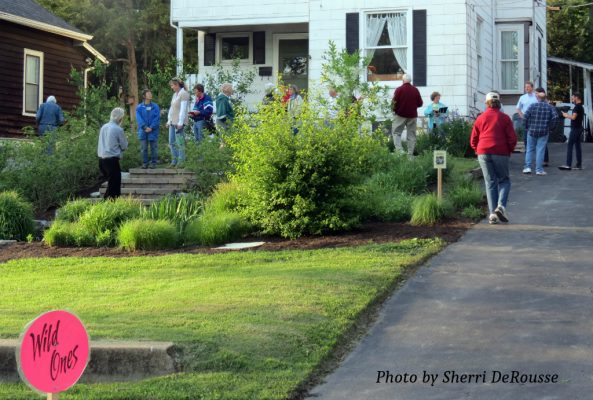
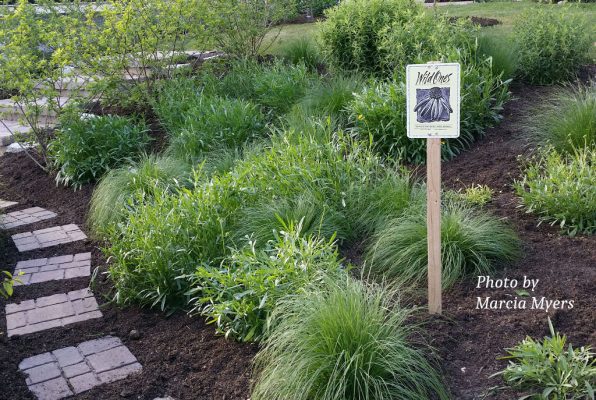
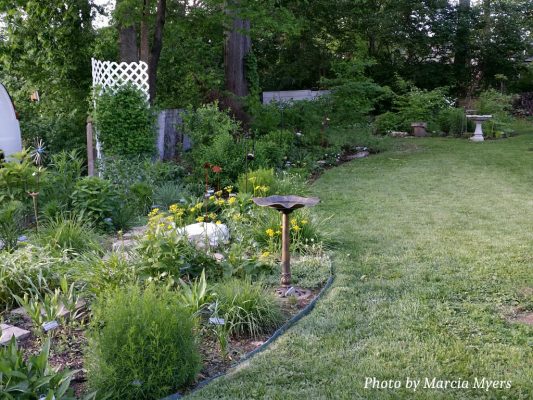
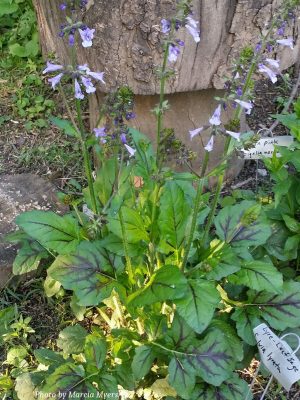
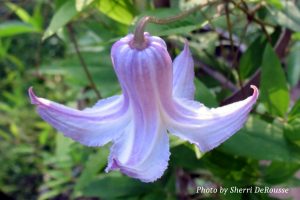
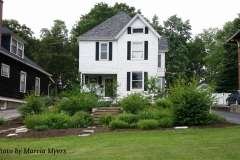
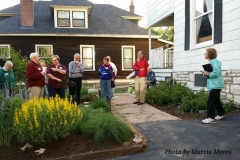
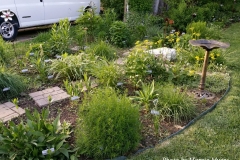
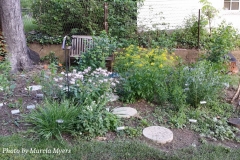
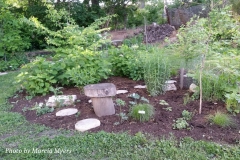
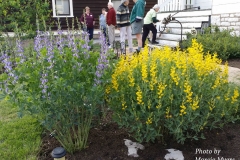
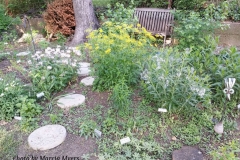
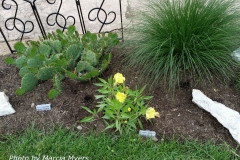

Love your yard!
Thanks Betty!
I was unable to attend viewings. Pls may I schedule a visit?
Looks awesome, Dawn. Good work. . .and thanks.
A.J. Andreson
Of course! Will send you an email 🙂
Her yard is special. Marcia I like the write up. Look forward to part two.
Great!
I think yards are awesome in different ways. For example, Bill Hoss’ yard is wonderful in his way of making it wonderful. Fran Glass’ yard is amazing because that’s what gives her joy. Dawn’s yard is reflective of how she absorbs herself completely in her interests. The gardens vary from mostly natural to manicured. I really like showing the possible options to anyone who is interested in native plants.
I too enjoy seeing different styles of gardening and how they develop over time. It will be interesting to see what mine looks like in a few years 🙂
Both the yard itself and the blog coverage of it are educational and inspiring. Thank you Dawn and Marcia. Have you considered submitting this, to the National Wild Ones Journal?
Thank you Marsha! I will talk with Dawn about submitting the blog – after part II. 🙂
what an inspiration…and what a collection! So fitting for an “urban landscape” – so sad I missed the real time tour, but the pictures were wonderful and alive! One of these days I’ll arrange a visit! thank you both for sharing…
Dear Dawn,
If someone who was not a fan of native gardens were to visit, your yard would instantly convert them. Its beauty, balance and spirit pulls us in, and your use of whimsical recycled art throughout is so charming.
Marcia, I love your use of the word “manicured” to describe Dawn’s planting (planning?) style, your eloquent, point-by-point recipe for Dawn’s success, and your photos. Marsha G. is right, you and Dawn must submit this to the National Wild Ones site, along with Part II, which, like everyone else, I’m looking forward to reading.